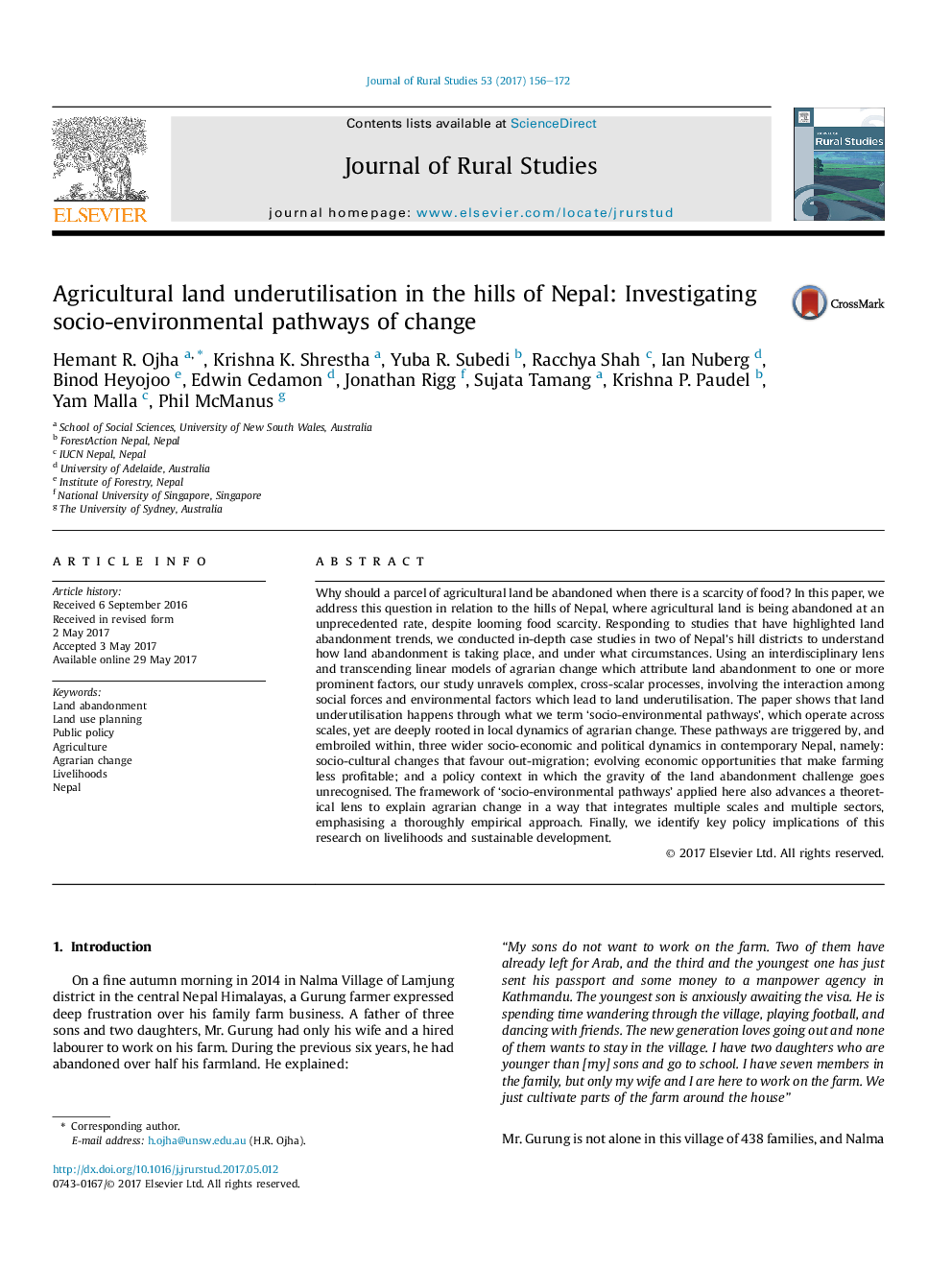| Article ID | Journal | Published Year | Pages | File Type |
|---|---|---|---|---|
| 6459992 | Journal of Rural Studies | 2017 | 17 Pages |
â¢Despite looming food insecurity, agricultural land underutilisation is happening in the Nepal hills.â¢Land underutilisation results from the interplay of social, economic, cultural, political and environmental factors.â¢A conceptual framework of socio-environmental pathways is developed and applied to analyse land underutilisation.â¢Local land management decisions are shaped by external processes - such as national politics and overseas youth migration.â¢Socio-environmental pathways lens helpful in understanding and responding to agrarian change.
Why should a parcel of agricultural land be abandoned when there is a scarcity of food? In this paper, we address this question in relation to the hills of Nepal, where agricultural land is being abandoned at an unprecedented rate, despite looming food scarcity. Responding to studies that have highlighted land abandonment trends, we conducted in-depth case studies in two of Nepal's hill districts to understand how land abandonment is taking place, and under what circumstances. Using an interdisciplinary lens and transcending linear models of agrarian change which attribute land abandonment to one or more prominent factors, our study unravels complex, cross-scalar processes, involving the interaction among social forces and environmental factors which lead to land underutilisation. The paper shows that land underutilisation happens through what we term 'socio-environmental pathways', which operate across scales, yet are deeply rooted in local dynamics of agrarian change. These pathways are triggered by, and embroiled within, three wider socio-economic and political dynamics in contemporary Nepal, namely: socio-cultural changes that favour out-migration; evolving economic opportunities that make farming less profitable; and a policy context in which the gravity of the land abandonment challenge goes unrecognised. The framework of 'socio-environmental pathways' applied here also advances a theoretical lens to explain agrarian change in a way that integrates multiple scales and multiple sectors, emphasising a thoroughly empirical approach. Finally, we identify key policy implications of this research on livelihoods and sustainable development.
